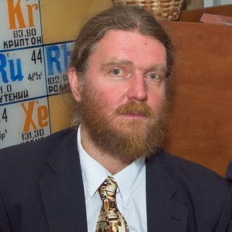Actinide Mineralogy and Crystallography
A special issue of Minerals (ISSN 2075-163X). This special issue belongs to the section "Crystallography and Physical Chemistry of Minerals & Nanominerals".
Deadline for manuscript submissions: closed (15 January 2019) | Viewed by 21827
Special Issue Editors
Interests: uranium mineralogy; X-ray crystallography; spectroscopy
2. Department of Crystallography, Institute of Earth Sciences, St. Petersburg State University, University Emb. 7/9, 199034 St. Petersburg, Russia
Interests: mineralogy; crystallography; structural complexity; uranium
Special Issues, Collections and Topics in MDPI journals
Special Issue Information
Dear Colleagues,
Actinide minerals, and especially those containing the structure uranyl ion, (UO2)2+, have attracted the interest of mineralogists and crystallographers since the discovery of the first “uranium mica” by I. Born in 1772. Nowadays, actinide minerals and inorganic compounds are inspiring objects of investigations, not only for mineralogists, crystallographers, geochemists, or spectroscopists, but also for chemists, who synthesize a large number of compounds inspired by the structural features of minerals. The demand for U worldwide, as well as the problems connected with a spent nuclear fuel, in the forms of waste dumps and piles after U mining or planned final repositories, all make research focused on actinides and, in particular, uranium and uranyl minerals, important.
This Special Issue welcomes contributions on actinide mineralogy, geochemistry, crystallography of both minerals and synthetic compounds, problems of uranium deposits and environmental impacts, and nuclear forensics, as useful applications of actinide geochemistry and mineralogy.
Dr. Jakub Plasil
Prof. Sergey V. Krivovichev
Guest Editors
Manuscript Submission Information
Manuscripts should be submitted online at www.mdpi.com by registering and logging in to this website. Once you are registered, click here to go to the submission form. Manuscripts can be submitted until the deadline. All submissions that pass pre-check are peer-reviewed. Accepted papers will be published continuously in the journal (as soon as accepted) and will be listed together on the special issue website. Research articles, review articles as well as short communications are invited. For planned papers, a title and short abstract (about 100 words) can be sent to the Editorial Office for announcement on this website.
Submitted manuscripts should not have been published previously, nor be under consideration for publication elsewhere (except conference proceedings papers). All manuscripts are thoroughly refereed through a single-blind peer-review process. A guide for authors and other relevant information for submission of manuscripts is available on the Instructions for Authors page. Minerals is an international peer-reviewed open access monthly journal published by MDPI.
Please visit the Instructions for Authors page before submitting a manuscript. The Article Processing Charge (APC) for publication in this open access journal is 2400 CHF (Swiss Francs). Submitted papers should be well formatted and use good English. Authors may use MDPI's English editing service prior to publication or during author revisions.
Keywords
- actinides
- uranium
- crystal-chemistry
- crystallography
- geochemistry
- economic geology
- environmental impacts
- nuclear forensics






